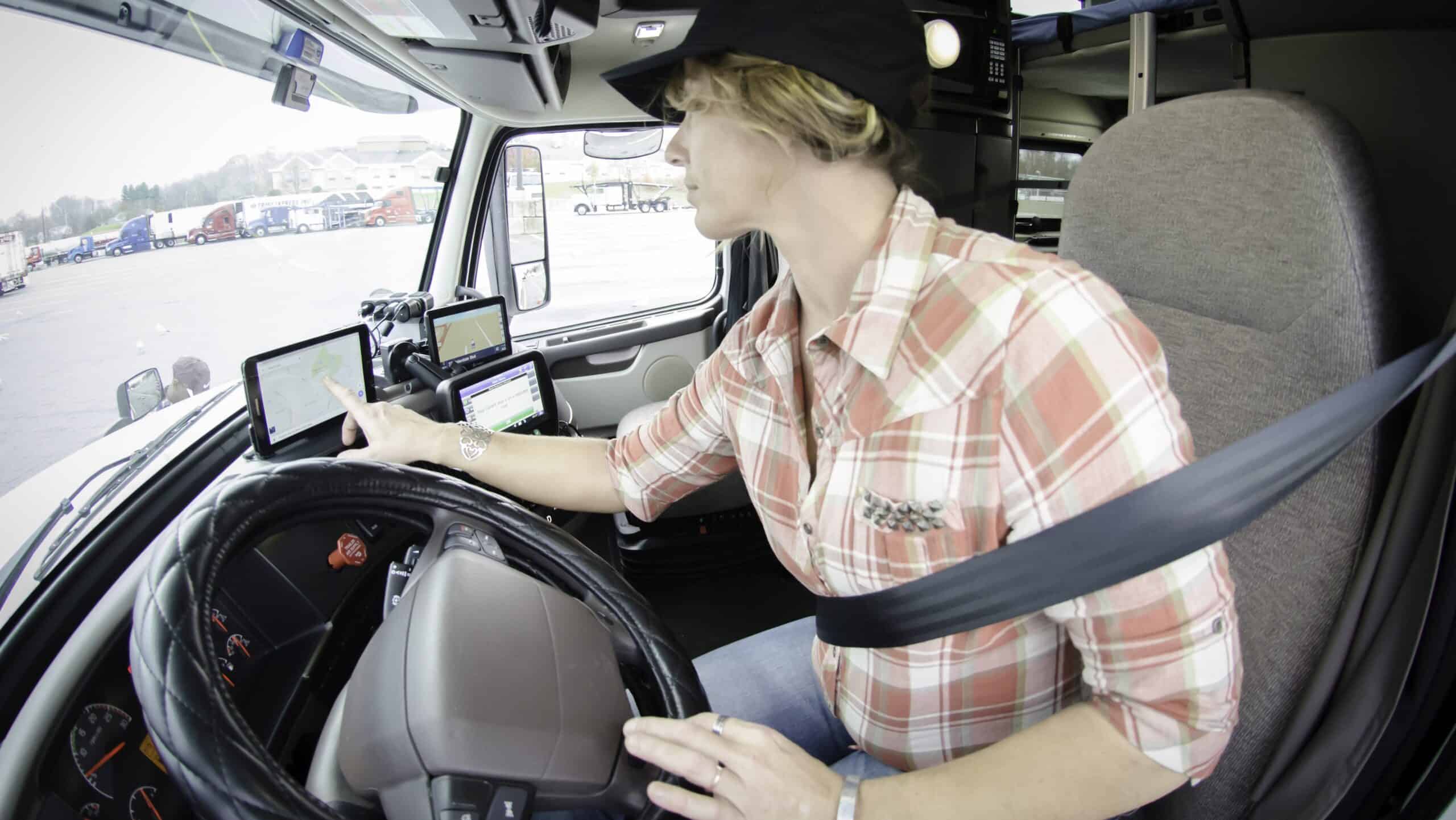It’s important for fleet managers and owner-operators to choose the right technology to help them manage their operations effectively.
Two often compared, popular options are GPS and GIS. Let’s dive deeper into what they are, the differences and similarities between these two technologies, and the advantages of both. Then we’ll explore how to determine which option is better suited for your fleet.
And when you’re finished reading, check out the other articles in our ‘GPS tracking’ series:
- What is commercial GPS tracking?
- GPS vs GIS: Which technology is better for your fleet?
- Benefits of real time GPS fleet-tracking solutions
- Best GPS trackers with no monthly fee
What’s the difference between GPS and GIS?
GPS (global positioning system) and GIS (geographic information system) are two different technologies for navigation and mapping.
What is GPS?
GPS is a satellite-based navigation system that provides location and time information, regardless of weather conditions. It’s accurate anywhere on or near Earth where there’s an unobstructed line of sight to four or more GPS satellites. GPS uses signals transmitted by the satellites to determine a person or object’s location, speed and direction of travel. The benefits of GPS tracking for trucking fleets are obvious.
What is GIS?
GIS, on the other hand, is a computer-based system for capturing, storing, analyzing, and managing geographic data. It’s used to create maps, visualize spatial patterns and relationships, and analyze geographic information. GIS combines geographic data (like maps, satellite imagery and demographics) with attribute data (including population density, income and land usage). It then creates detailed maps to identify patterns and relationships.
In summary, GPS is a technology used to determine a user’s location, while GIS is a technology used to create maps and analyze geographic data. However, GPS can be used within GIS to capture data about the location of assets or features in the field. GIS can also be used to create maps that incorporate GPS data.
Comparing GPS and GIS
Let’s explore the similarities and differences between the two types of navigation systems:
Similarities between GPS and GIS
- Spatial data – Both deal with location-based information. GPS determines and records the precise location of a device, while GIS maps and analyzes various types of spatial data.
- Use of geographic coordinates – GPS and GIS use specific sets of numbers to identify locations on the earth’s surface. The former uses latitude and longitude, while the latter can use different types of coordinate systems.
- Navigation applications – GPS is primarily used to help users navigate from one location to another. GIS can also be used for navigation, but is more commonly used for mapping and spatial analysis.
- Specialized software and hardware requirements – Both require specialized software and hardware to function properly. GPS requires a receiver and mapping software. GIS requires software that can perform spatial analysis and display data in a map format.
Difference between GPS and GIS
The most important difference between the two is how they’re used. GPS is a technology that determines the exact location of an object or person on the planet. GIS technology manages, stores, manipulates, analyzes and presents geospatial data.
GPS provides positional information while GIS offers a framework for organizing and analyzing data with a spatial component.
Where do GPS and GIS pull their information from?
GPS pulls its information from a network of satellites orbiting the Earth. It’s used by a range of people, including drivers, hikers, pilots, sailors, and outdoor enthusiasts navigating through unfamiliar areas. It plays a crucial role in trucking businesses, improving productivity, reducing costs and enhancing customer satisfaction.
GIS pulls its information from GPS, aerial imagery, satellite imagery, ground surveys and other data sources. It’s typically used by professionals in truck management for large fleets to analyze and visualize complex spatial data. GIS provides fleet managers with accurate and up-to-date location-based data, predictive analytics and mapping. It enables them to make informed decisions, improve efficiency, reduce costs and increase customer satisfaction.
How are GPS and GIS used in trucking?
GPS is extensively in various aspects of trucking operations. These include:
- Fleet management – Fleet managers use GPS to track truck locations, monitor their speeds and keep an eye on fuel consumption.
- Routing and scheduling – GPS takes traffic conditions into account to offer continuously updated delivery time estimates and truck route planning suggestions.
- Navigation – Accurate, up-to-date navigation ensures that truckers don’t waste valuable time by getting lost.
- Safety and security – GPS empowers fleet managers to monitor driving behaviors, detect unauthorized vehicle use, and ensure the safety of the cargo. In emergencies, GPS can provide exact truck locations to rescue personnel. Just make sure that you’re aware of all relevant GPS tracking laws.
GIS planning is also highly relevant to trucking business operations. Here are some example applications:
- Route optimization – GIS technology can be used to find the most efficient route for a truck to take to its destination. By analyzing traffic patterns, road conditions and other factors, GIS can identify the fastest and most direct route.
- Asset tracking – Using GIS, fleet managers responsible for transportation planning can track the location of trucks and other assets in real-time.
- Infrastructure management – Cities and states can apply GIS technology to model traffic patterns and predict future needs, including new highways and bridges.
Which option is better for your fleet?
Ultimately, the choice between GPS and GIS depends on a fleet’s specific needs and budget.
Good GPS tracking systems are relatively easy to use. However, the GPS geodatabase offers limited data beyond locations, which limits their insights for fleet managers.
GIS has geospatial technology that can provide a comprehensive view of a trucking fleet’s operations. The technology requires more advanced technical skills to use, though, and may be more expensive than GPS.
If you just need commercial vehicle tracking without extensive data analysis functions, then GPS tracking for trucking companies may be best. When you need more comprehensive analytics capabilities, then GIS is potentially a better choice.
GPS and GIS are both solid choices for trucking fleets
As you can see, there are advantages and disadvantages to GIS and GPS tracking for commercial trucks. Both represent a viable truck fleet management solution, either on their own or used together.
Before deciding which one will work best for your team, consider your specific requirements, budget and technological competencies.
FAQ
No, given all the advantages of GPS truck telematics systems, is isn’t going obsolete anytime soon. Even with new technologies emerging, GPS remains an essential technology that’s improving with continuous refinements.
Some of the most popular, best GIS software tools for truck telematics include ArcGIS, QGIS, MapInfo, Google Earth and GeoDa.
Yes. When combined, data integration allows users to map and synthesize various types of data in real-time. Applications include the analysis of traffic patterns, weather conditions and the effects of natural disasters.


